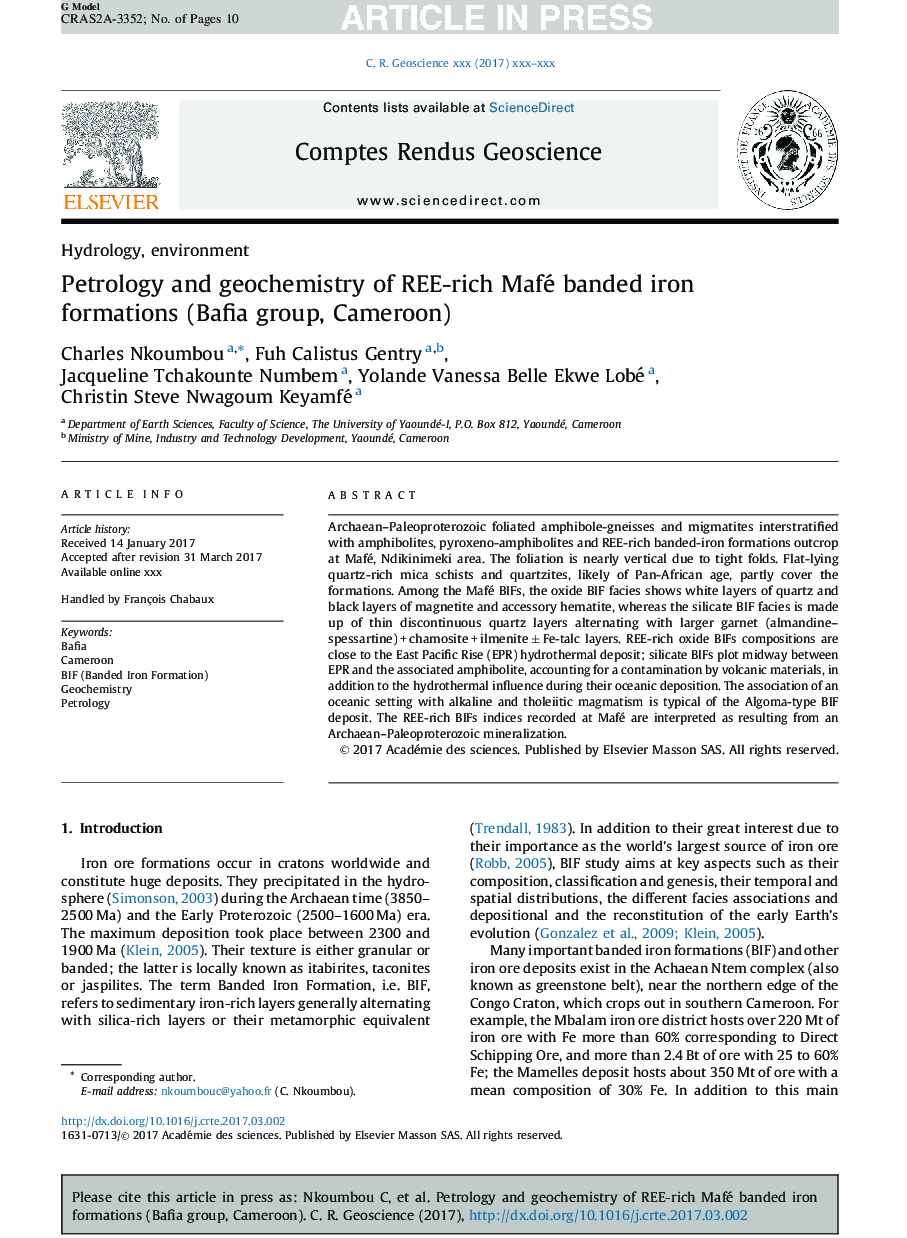| Article ID | Journal | Published Year | Pages | File Type |
|---|---|---|---|---|
| 5755189 | Comptes Rendus Geoscience | 2017 | 10 Pages |
Abstract
Archaean-Paleoproterozoic foliated amphibole-gneisses and migmatites interstratified with amphibolites, pyroxeno-amphibolites and REE-rich banded-iron formations outcrop at Mafé, Ndikinimeki area. The foliation is nearly vertical due to tight folds. Flat-lying quartz-rich mica schists and quartzites, likely of Pan-African age, partly cover the formations. Among the Mafé BIFs, the oxide BIF facies shows white layers of quartz and black layers of magnetite and accessory hematite, whereas the silicate BIF facies is made up of thin discontinuous quartz layers alternating with larger garnet (almandine-spessartine) + chamosite + ilmenite ± Fe-talc layers. REE-rich oxide BIFs compositions are close to the East Pacific Rise (EPR) hydrothermal deposit; silicate BIFs plot midway between EPR and the associated amphibolite, accounting for a contamination by volcanic materials, in addition to the hydrothermal influence during their oceanic deposition. The association of an oceanic setting with alkaline and tholeiitic magmatism is typical of the Algoma-type BIF deposit. The REE-rich BIFs indices recorded at Mafé are interpreted as resulting from an Archaean-Paleoproterozoic mineralization.
Keywords
Related Topics
Physical Sciences and Engineering
Earth and Planetary Sciences
Earth and Planetary Sciences (General)
Authors
Charles Nkoumbou, Fuh Calistus Gentry, Jacqueline Tchakounte Numbem, Yolande Vanessa Belle Ekwe Lobé, Christin Steve Nwagoum Keyamfé,
